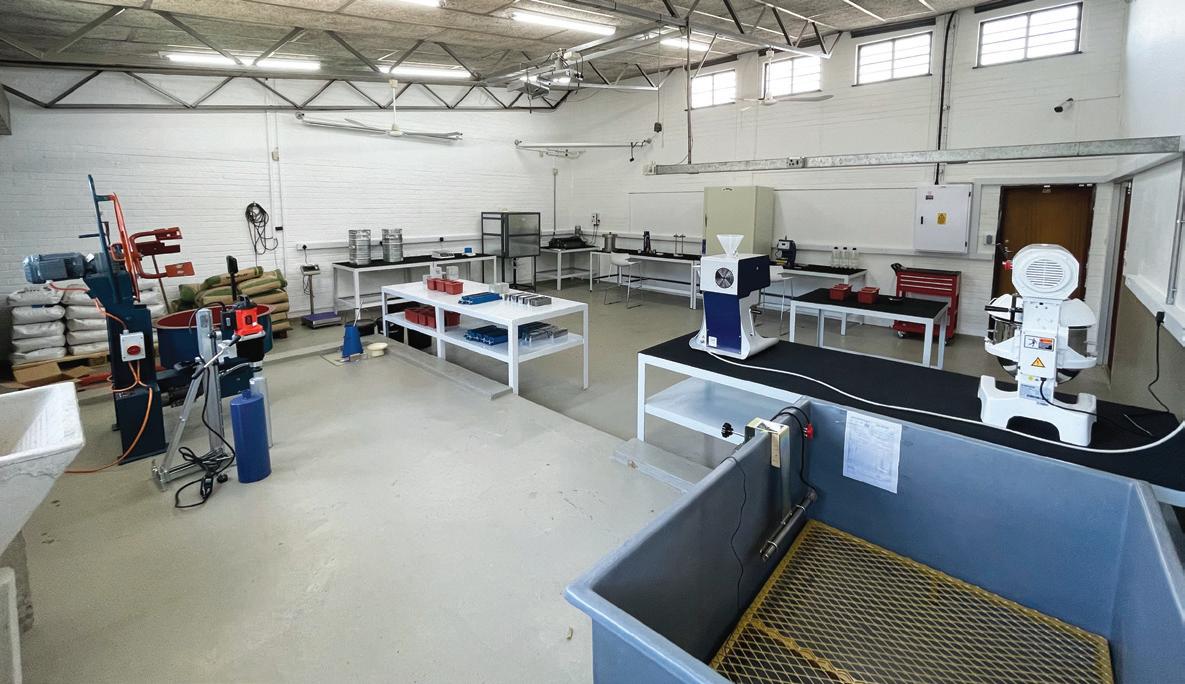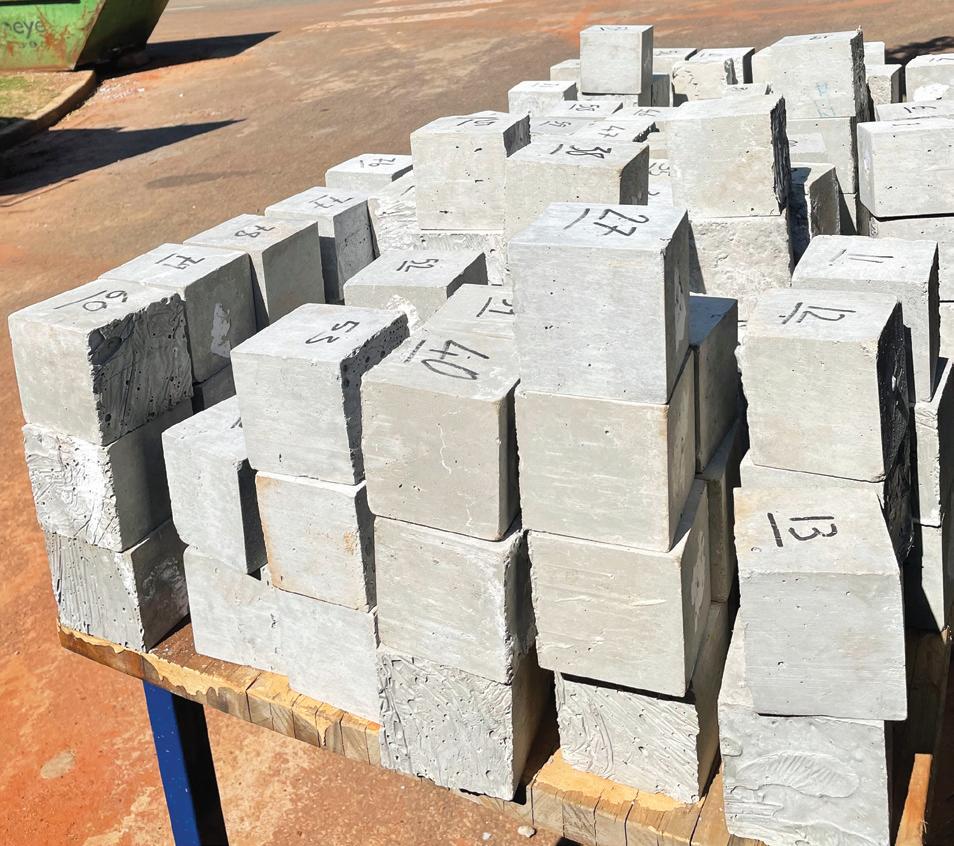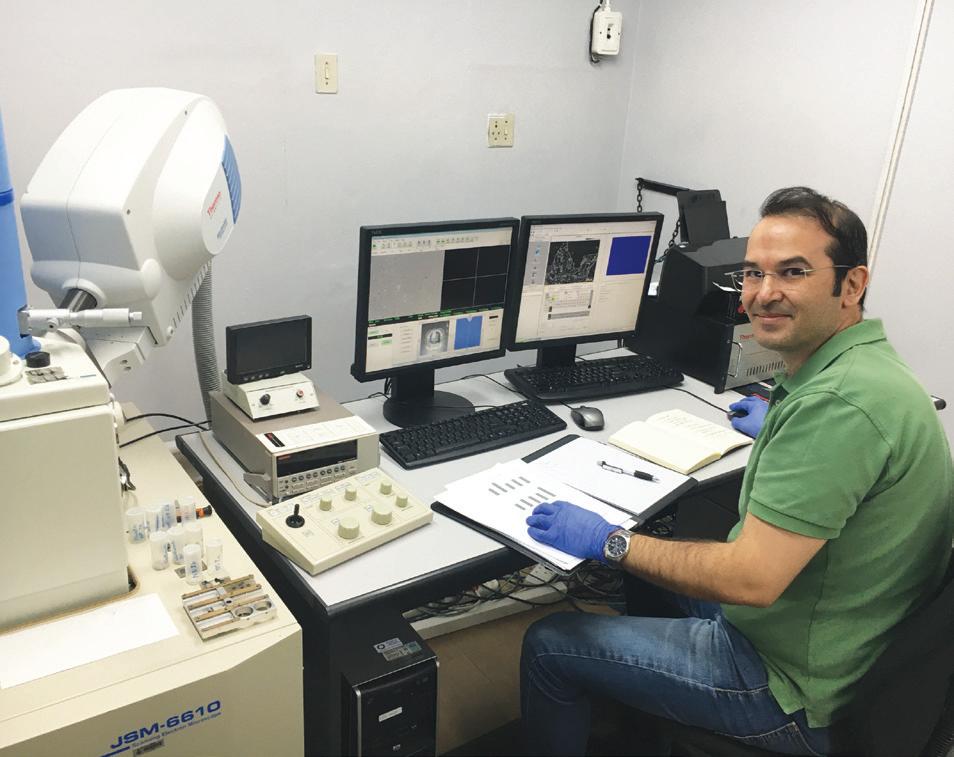
4 minute read
UFS works on developing green concrete
UFS works on developing Green Concrete using geopolymer binders
By Eamonn Ryan
Advertisement
Lecturer and project leader at the University of the Free State Department of Engineering Sciences, Dr Abdolhossein Naghizadeh, leads a green concrete project which aims to produce user-friendly geopolymer concrete by eliminating aggressive alkali activator additives from the mixtures.
The green concrete project involves research aimed at producing environment-friendly concrete based on industrial waste materials. The potential product will be formulated by optimising mixture parameters and ingredients based on the South African industrial by-products.
In green concrete mixtures, geopolymer is typically used as the binder. Geopolymer binders consist of two components comprising solid raw material and a liquid alkali activator. Once the raw material is mixed with an alkali activator, the hardening process starts. To obtain high strengths, the mixture is exposed to elevated temperatures of between 40°C and 80°C for up to 24 hours.
Although geopolymer concrete technology has been employed to a limited extent in projects in China, Australia, France and the US, there remain some issues regarding the complexity of this technology that need to be solved before Cement and concrete lab at the Department of Engineering in the University of the Free State



Green concrete specimens prepared by the research partners at the University of Johannesburg
its extensive application in the industry. It may take some time before this ‘new’ concrete will be used more regularly in the construction industry, explains Naghizadeh.
GREEN CONCRETE
“Green Concrete based on locally available waste material has been formulated and produced on a laboratory scale. The physical and mechanical properties of the material have been evaluated. So far, the findings show that this new material can exhibit superior performance to the conventional concrete based on Portland cement. Besides the properties of as-prepared material, the durability performance of concrete is also essential. Materials used in construction are exposed to different environmental conditions during their service lifespans, which sometimes can reach a hundred years. Therefore, construction material’s long-term stability upon exposure to various environmental parameters such as chemical attacks, humidity, and temperature variation is crucial. At the current phase of the project, a series of durability tests are being conducted to ensure the appropriate long-term preferences of this material,” he says.
“The main objective of green concrete technology is to minimise the environmental impact caused by normal cement, but consuming green concrete based on a geopolymer binder system can also provide economic benefits by using waste materials, as well as minimising energy consumption. The reuse of industrial waste materials such as fly ash would help with waste management in power stations,” he notes.
The technology of geopolymer binder as an alternative cement was introduced to the academic world a few years ago. However, there are some issues that greatly hinder its application in the industry.
Some of these issues are related to the mixing design complexity, the aggressiveness of the activators used, the diversities of raw materials found in different countries and special curing procedures required for this type of concrete.
Based on the significance of the research topic, as well as the existing research capacity in the UFS Department of Engineering Sciences, the research committee decided to play a role and contribute to the ongoing development of the new technology, known as geopolymer concrete or green concrete.
USER FRIENDLY MATERIALS
“The project aims of this laboratory are to create formulations of green concrete based on user-friendly materials and the simplification of the preparation and mixing process. This could introduce a more eco-friendly, desirable product that can be easily employed extensively in the construction industry,” explains Naghizadeh.
There is a real potential for economic mass production and an adequate market. “Currently, there is a huge demand for cement in the South African construction industry, where a remarkable amount of cement consumed is imported. Based on the vast availability of industrial wastes used as raw materials in green concrete and the market’s significant demand, it is predicted that this alternative concrete will play an essential role in the construction industry in the future.
Naghizadeh believes there is sufficient industrial waste like fly ash to be commercially viable. “South African fly ash is classified as low calcium Class-F fly ash with highly reactive components, making it a suitable raw material for green concrete. A significant amount (beyond 27 million tons per year) of fly ash is produced in South Africa, where only minor proportions of less than 5% of this amount are used, and the rest is deposited in landfills. This statistical data shows that the available material is way higher than what is needed for green concrete, even if it is used as the predominant construction material one day.”
Similar research is taking place in other countries, he says: “The green concrete formulated in our lab is based on geopolymer binder technology which was proposed by European scientists a few years ago. Although the basic technology is consistent with the other researchers around the world, the formulation of green concrete is highly dependent on the type, composition, and properties of the locally available waste materials that vary from one place to another. The topic of geopolymer technology is quite advanced, and our project’s findings are regularly published in top international journals.
“Green concrete consists of approximately 95% (by mass) of industrial wastes such as fly ash, slag and recycles aggregate. Less than 5% (by mass) of composition is some chemicals called alkali activator,” says Naghizadeh. n

Dr Abdolhossein Naghizadeh running analysis on green concrete samples using a Scanning Electron Microscope at the University of the Free State










